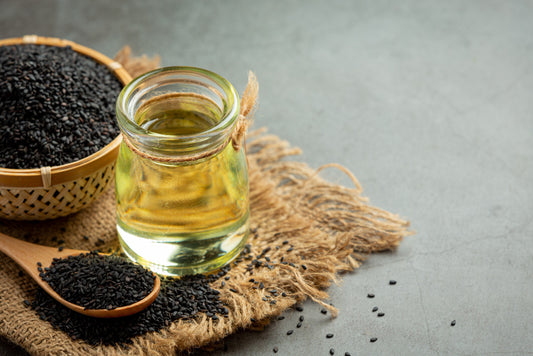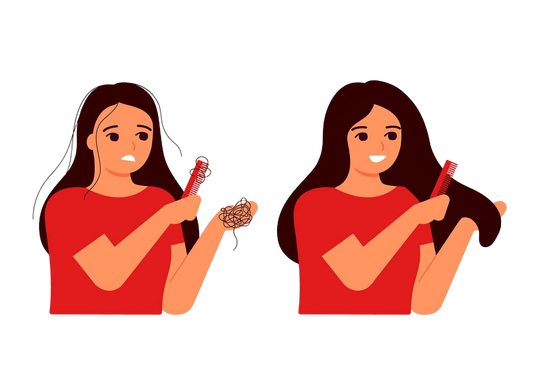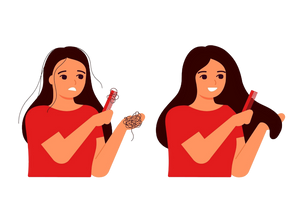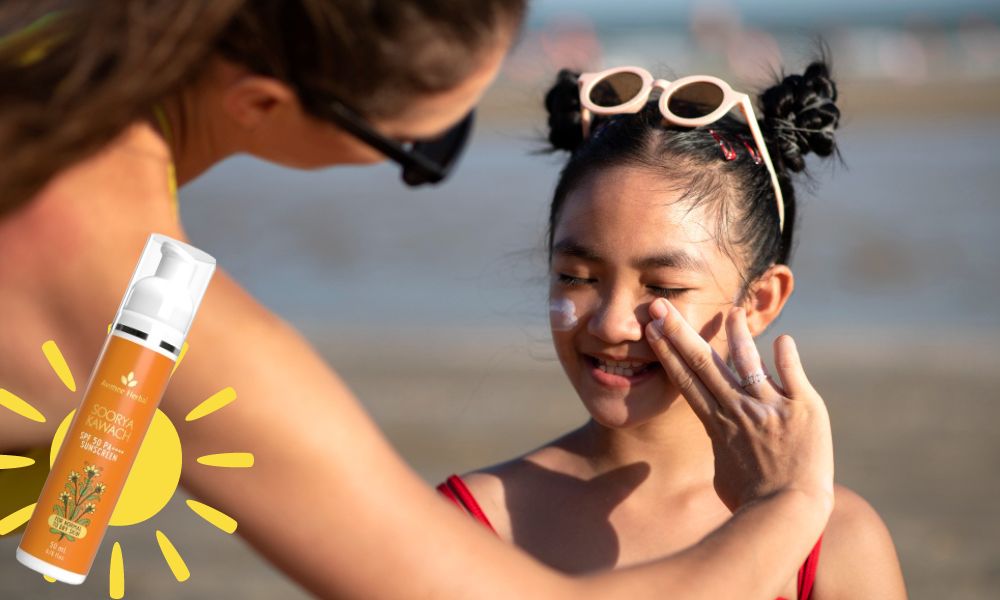Articles
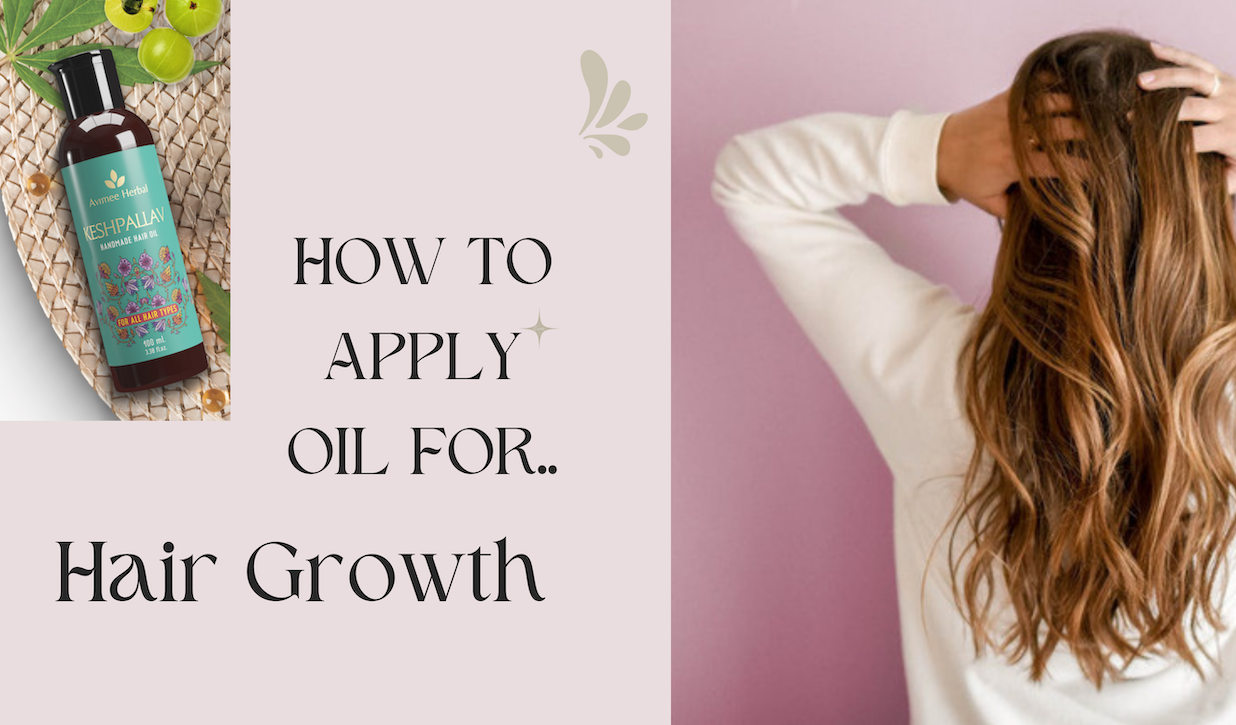
Skin Care
Guide: How To Apply Hair Oil For Hair Growth?
Ayurveda, the ancient wisdom of India, holds the key to unlocking your hair's full potential. Today, we will answer "how to apply hair oil for hair growth?" , steps are: selecting hair oil, heating the oil, applying on scalp and hair and doing a massage, leaving it for noursihment.
We will also look at how to apply argan oil, rosemary oil, hibiscus, bhringraj oil, amla oil for hair growth. Let's start with the steps involved in the process:
Step 1: Selecting Hair Oil:
Just like snowflakes, no two scalps are alike. Each hair type and concern has its ideal Ayurvedic oil partner:
- Dry Hair: Bhringraj, the "king of herbs", reigns supreme, promoting scalp health and stimulating growth.
- Oily Hair: Neem, the gentle warrior, balances sebum production while fighting dandruff and scalp infections.
- Thinning Hair: Brahmi, the "herb of wisdom", whispers secrets of strength to your follicles, encouraging growth and preventing thinning.
- Damaged Hair: Amla,the vitamin C powerhouse, mends past battles, leaving your strands smooth and resilient.
Step 2: Warm/Heat the Oil:
Turn your hair oiling into a mindful experience:
- Warm the oil gently: Heat a small amount in a pan until lukewarm. Never microwave, as it can destroy the nutrients.
- Create a calming space: Light a soothing incense or diffuse essential oils like rosemary or lavender to enhance the ritual.
Step 3: Applying on Scalp, Hair and Massaging:
- Divide and conquer: Section your hair for even application, starting at the crown and working your way down.
- Circular massaging: Begin with gentle circular massages using your fingertips. Focus on pressure points as you move across your scalp, stimulating blood flow and nourishing follicles.
- Tip-to-Root Tango: Once the scalp is saturated, distribute the remaining oil through the lengths of your hair, paying special attention to the ends.
Step 4: Leave the Oil for Nourishment:
- Overnight Nourishment: Leave the oil on for at least an hour,or even overnight for deeper penetration. Wrap your hair in a warm towel or shower cap for maximum benefit.
- The gentle cleanse: Wash your hair with a gentle, sulfate-free shampoo the next morning.
Step 5: Consistency is Key:
Incorporate this hair oiling ritual into your weekly routine. Aim for 2-3 applications per week, depending on your hair type and needs.
Bonus Tips:
- Elevate your oil's power with DIY blends. Mix your chosen oil with ingredients like fenugreek seeds or curry leaves.
- Practice scalp yoga! Gentle stretches can further improve blood flow and hair growth.
- Manage stress, a major contributor to hair loss. Meditation, yoga, and spending time in nature can help.
Frequently Asked Questions:
- How long should I leave the oil on? An hour is the minimum, but overnight will offer deeper penetration.
- Can I apply oil to wet hair? No, hair needs to be dry for the oil to reach the scalp effectively.
- Is it okay to oil my hair every day? For dry or damaged hair, daily oiling can be beneficial. For other hair types, 2-3 times a week is sufficient.
- Will I experience hair loss after the first application? This is normal as the oil loosens dead hair strands. Don't worry, new growth will follow!
Q: How to use rosemary oil for hair growth?
A: There are two main ways to use rosemary oil for hair growth:
- Direct Scalp Massage: Dilute 5-10 drops of rosemary oil in 1 tablespoon of carrier oil (jojoba, coconut, etc.). Massage the mixture into your scalp for 5-10 minutes, focusing on areas with hair loss. Leave on for 20-30 minutes or overnight, then rinse out. Repeat 2-3 times a week.
- Mix with Hair Products:Add 2-3 drops of rosemary oil to your shampoo, conditioner, or hair mask before use. Wash your hair as usual.
Tips:
- Always dilute rosemary oil before applying it to your scalp.
- Do a patch test before using rosemary oil on a larger area to check for any allergic reactions.
- Be patient, as it may take several months to see results.
Q: How to improve hair growth naturally?
A: Several natural methods can promote hair growth:
- Diet: Ensure adequate intake of protein, iron, vitamin D, and biotin.
- Scalp Massage: Stimulates blood circulation and improves nutrient delivery to hair follicles.
- Stress Management: Chronic stress can contribute to hair loss. Manage stress through yoga, meditation, or exercise.
- Gentle Hair Care: Avoid harsh shampoos, tight hairstyles, and excessive heat styling.
- Hydration: Drink plenty of water to stay hydrated and promote healthy hair growth.
Note: These methods may take time to show results and may not be as effective for everyone.
Q: How to use argan oil for hair growth?
A: Argan oil is primarily a conditioner and moisturizer, not a direct hair growth stimulant. However, it can improve the overall health of your hair, which can indirectly contribute to stronger, less breakage-prone strands, potentially leading to perceived increased growth.
- Hair Mask: Apply argan oil directly to your hair and scalp as a pre-shampoo treatment. Leave on for 30 minutes to 1 hour,then wash your hair as usual.
- Split Ends Treatment: Rub a few drops of argan oil onto your fingertips and massage them into your split ends.
- Leave-in Conditioner: Apply a small amount of argan oil to the ends of your hair after styling.
Tips:
- Choose cold-pressed, organic argan oil for maximum benefits.
- Start with a small amount of argan oil and increase gradually as needed.
- Argan oil can weigh down fine hair, so use it sparingly if you have this hair type.
Q: How to use hibiscus for hair growth?
A: Hibiscus leaves and flowers are believed to have hair growth-promoting properties due to their high content of nutrients and antioxidants. Here are two ways to use them:
- Hibiscus Hair Mask: Grind hibiscus leaves or flowers into a paste. Mix with yogurt or honey for added nourishment. Apply the paste to your scalp and hair, leave on for 30 minutes, then rinse out.
- Hibiscus Hair Rinse: Boil hibiscus leaves or flowers in water to make a strong tea. Let it cool, then use it as a final rinse after shampooing and conditioning.
Tips:
- Do a patch test before using hibiscus on your scalp to check for any allergic reactions.
- Hibiscus can stain light hair, so be careful when applying it.
Please note: While these methods are based on traditional practices and anecdotal evidence, scientific research on their effectiveness for hair growth is limited. Consult a dermatologist or trichologist if you have concerns about hair loss or want personalized advice.
Remember, beautiful hair starts with a healthy scalp and a mindful heart. With Ayurvedic hair oiling, you're not just nourishing your strands; you're embarking on a journey of self-care and growth.
So, adapt the routine, listen to your hair's whispers, and watch your mane blossom with newfound health, strength, and beauty.
Now go forth and unlock your hair's limitless potential!

 Doctor Consultation
Doctor Consultation


